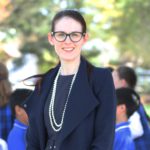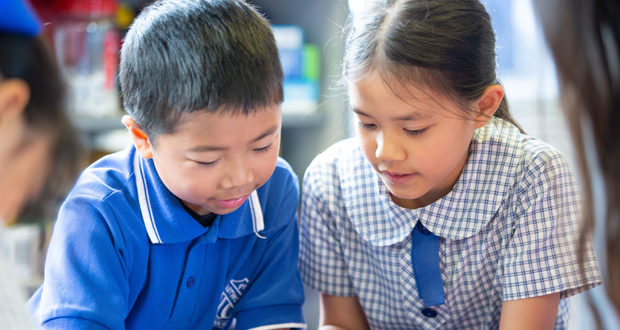This year’s Education Week theme is 'Every student, every voice'. This week is the perfect time to step back and reflect on how we can help strengthen our pupils’ voices, and consider why it’s so critical to do so.
Helping students to find their voice is one of the most essential tasks for any educator, but achieving it can be a real challenge, especially when your school is a large one. Thinking of your student body as one big amorphous crowd is one of the fastest ways to silence a child’s individual voice, and can result in students feeling disconnected from their own learning.
Finding your students’ individual voices means acknowledging that they are more than a name on a roll call list: pupils should be treated as humans first, children or young adults second and students third. As unique individuals, pupils also need access to unique paths to learning, ideally tailored by the student themselves. Every student will have a unique perspective on their own education, and educators must acknowledge and appreciate that, collaborating and involving students and their families authentically in all aspects of their learning journey.
In schools this concept impacts not just how students are taught, but how students learn and how student success is measured. If schools and teachers focus on supporting every child as an individual learner then this provides endless scope for students to focus on how they can improve and challenge themselves to improve, while participating in meaningful tasks that are engaging, relevant and timely.
The idea of boosting every child’s individual voice builds on the work of John Hattie, the creator of The Visible Learning framework. Hattie’s work is built on the findings of more than 95,000 studies involving more than 300 million students, and stresses the importance of tailored, individual feedback.
Visible Learning means making feedback and goal setting about more than the standard marked and graded work. It’s about making student learning visible and tangible by setting intentions, making the criteria for success clear and accessible to the children, and providing timely, specific and meaningful feedback. The goal is to allow students to drive their own learning, and feel empowered to improve. At Eastwood Public School, our students set learning goals every five weeks in collaboration with their teacher, from as young as age four. The result is happier, more engaged students that can articulate what they need to do to improve, whose passion for learning shines through all activities.
Aside from personalised feedback, schools can provide their students a voice through inter-school activities that transcend the classroom. This doesn’t necessarily mean involving children in one or two activities – at public schools there are a whole world of activities for every kind of student, from leadership camps to recycling programs.
Students should also feel that they have a ‘say’ and input into school-wide decisions. A sense of democracy should be promoted, with students able to give their input on any changes that will impact the entire school. Student forums, workshops and surveys are great ways to gather ideas and feedback before proceeding with any big changes.
One of the ways our school gives its children a voice, for example, is through a council with elected student representatives from every class in years two through to six. Students come together regularly to raise issues, plan solutions and work together to create a positive and improved school climate and environment.
This is as much about empowering each individual to share their point of view as it is about teaching children the important life lesson that we should always leave people and places better than we found them, and that this requires critical thinking, personal responsibility, and having the courage to act.
For pupils to feel like they’re fully in control of their own education, it’s essential that they are treated as unique individuals who have their own voice. It’s a skill that they can take with them far beyond their time at school, and into their work, family and community lives.
Within and beyond the school gates, the way we communicate and connect with one another continues to change at a startling pace. If we can teach our students to have the confidence to find their own voice from a young age, they will be better prepared for whatever the future might bring. The possibilities are endless!
So as we focus on this year’s Education Week theme of ‘Every student, every voice’, let’s embed this ethos and belief across schools so students can shape their learning and be a dynamic and active force for positive change in their world.

Helen Davis is the Principal of Eastwood Public School in north-west Sydney.
Do you have an idea for a story?Email [email protected]
 Education Review The latest in education news
Education Review The latest in education news
